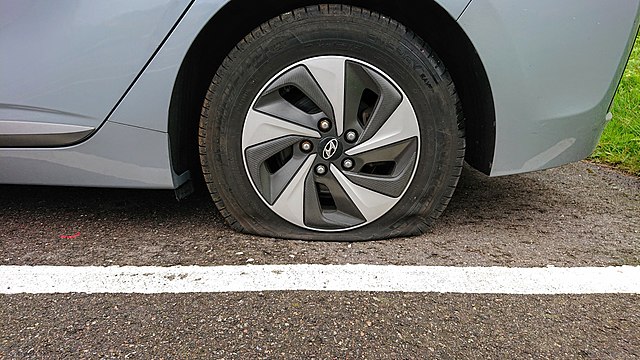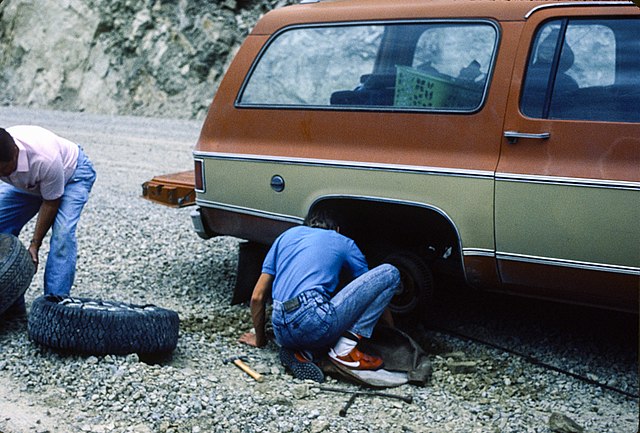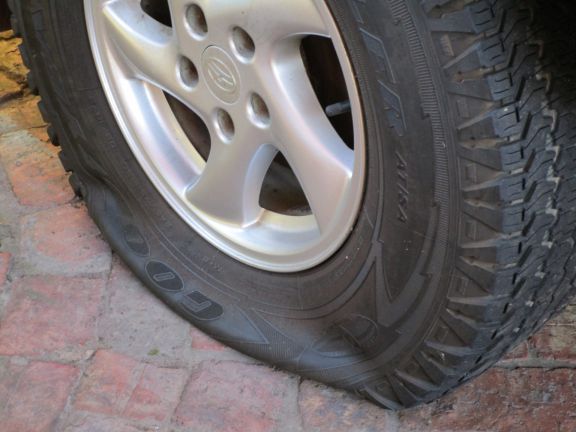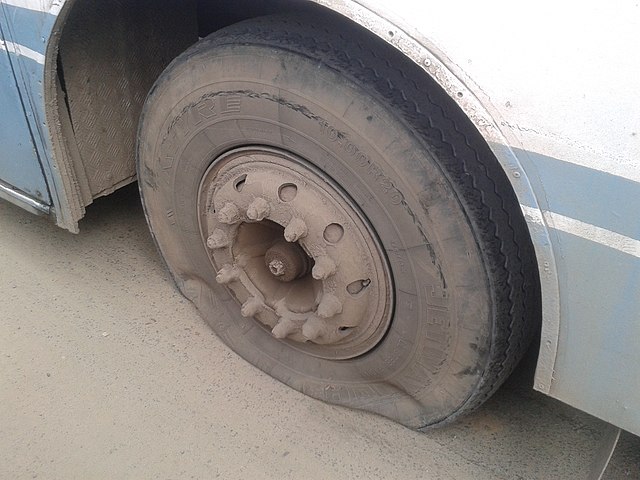When cruising down the open road, the last thing you want is a sudden jolt and the dreaded hiss of escaping air. A punctured tire can instantly deflate your spirits and leave you wondering about the real cost of patching it.
Is it worth the hassle, the time, and the money?
This comprehensive article will delve into the nitty-gritty of tire patching, uncovering the hidden intricacies and shedding light on its true value. Buckle up as we navigate through statistics, delve into the repair process, and weigh the pros and cons, helping you make an informed decision that keeps your wallet and safety in mind.
Understanding Tire Punctures and the Need for Repair

Tire punctures are a common occurrence that can disrupt our daily lives and pose safety risks. In this section, we will delve into the causes of tire punctures and highlight the importance of timely repair.
Explaining common causes of tire punctures
- Road hazards: Nails, screws, glass shards, and other debris on the road can penetrate the tire, causing punctures. These hazards are often unavoidable and can occur in urban areas as well as on highways.
- Underinflated or worn-out tires: Insufficient tire pressure or worn-out tread can make tires more vulnerable to punctures. Underinflated tires have less resistance against road hazards, while worn-out tread lacks the necessary thickness to withstand sharp objects.
Highlighting the dangers of driving with a punctured tire
- Reduced traction and handling: A punctured tire compromises its ability to grip the road, resulting in reduced traction and compromised handling. This can lead to longer braking distances, decreased stability, and an increased risk of accidents.
- Potential for tire blowouts: If a puncture worsens or if the tire sustains further damage, it can lead to a sudden blowout. Tire blowouts can be extremely dangerous, causing loss of control and potentially resulting in accidents and injuries.
- Negative impact on fuel efficiency: A punctured tire can create additional rolling resistance, requiring the engine to work harder and consume more fuel. This inefficiency not only affects the environment but also increases the cost of driving.
Understanding the causes and risks associated with tire punctures emphasizes the need for prompt repair to ensure optimal safety and performance. By addressing these issues, drivers can mitigate potential hazards and extend the lifespan of their tires.
The Tire Patching Process: Exploring the Steps and Costs

Tire patching is a multi-step process that involves careful examination and repair. Let’s take a closer look at the steps involved and the factors influencing the costs:
Steps involved in tire patching:
1. Inspection and locating the puncture
A trained technician will thoroughly inspect the tire to identify the exact location of the puncture. They may use methods like visual inspection, water immersion, or electronic leak detection to pinpoint the precise spot. This step ensures that the repair is targeted and effective, preventing any potential air leaks in the future.
2. Removing the tire from the rim
To properly access the punctured area, the tire needs to be carefully removed from the rim. This step requires specialized tools and expertise to avoid damaging the tire or the rim. The technician will follow proper procedures to safely remove the tire, allowing for a thorough examination of the inner and outer surfaces.
3. Preparing the puncture site
Once the puncture is located, the technician will clean and roughen the area surrounding the puncture. This is typically done using a specialized rasp tool or abrasive material to create a suitable surface for the patch. The roughening process ensures better adhesion between the patch and the tire, improving the effectiveness of the repair.
4. Applying a high-quality patch material
A high-quality patch material, specifically designed for tire repairs, is applied to seal the puncture. The patch is made of a combination of vulcanized rubber and adhesive, ensuring a strong and long-lasting bond with the tire. The technician carefully applies the patch to cover the entire punctured area, effectively closing the hole and preventing air leakage.
5. Remounting the tire and balancing
Once the patch is securely in place, the tire is carefully remounted onto the rim. The technician ensures that the tire is properly aligned and seated, using specialized equipment like tire mounting machines and pneumatic tools.
After remounting, the tire is balanced to minimize vibrations during driving. The technician attaches small weights to the rim to counterbalance any uneven distribution of weight, resulting in a smooth and comfortable ride.
Factors Influencing the Costs of Tire Patching

1. Complexity and size of the puncture
The complexity and size of the puncture can influence the overall costs of tire patching. Larger or more complex punctures, such as those caused by nails or sharp objects, may require additional time and effort to repair.
The technician may need to remove debris, assess the extent of the damage, or perform additional steps to ensure a proper repair. Consequently, the costs may be higher compared to smaller, simpler punctures.
2. Type and quality of the patch material used
The patch material type and quality can vary among tire repair shops. High-quality patches are typically made from premium vulcanized rubber and adhesive, offering better durability and longevity.
These patches may come at a slightly higher cost compared to lower-quality alternatives. However, investing in a high-quality patch ensures a stronger and more reliable repair, reducing the likelihood of future leaks or failures.
3. Additional services offered
Some tire repair shops offer additional services as part of the patching process. These services can include tire balancing, valve stem replacement, or wheel alignment checks. Balancing the tire ensures an even distribution of weight, reducing vibrations and enhancing overall driving comfort.
Valve stem replacement is recommended when the existing stem is damaged or worn out. Additionally, wheel alignment checks are often conducted to ensure proper tire positioning and prevent uneven tread wear. These additional services may incur extra costs, but they contribute to the overall quality and longevity of the repair.
Evaluating the Benefits of Tire Patching

Tire patching offers several benefits worth considering before deciding whether to repair a punctured tire. This section explores the advantages of tire patching and highlights its significance in cost savings and safety.
Extending Tire Lifespan and Avoiding Premature Replacement
- Comparing the cost of patching versus buying a new tire: Tire patching is generally more cost-effective than purchasing a brand new tire, especially if the existing tire has a significant amount of tread life remaining.
- Environmental impact of tire disposal: Repairing a punctured tire reduces waste and contributes to a more sustainable approach by avoiding unnecessary tire disposal.
Enhancing Safety and Maintaining Optimal Tire Performance
- Preserving tire integrity and load-bearing capacity: Properly patched tires can maintain their structural integrity and load-carrying capabilities, ensuring a safer driving experience.
- Ensuring consistent traction and braking capabilities: Tire patches, when performed correctly, help restore the tire’s grip on the road, ensuring optimal traction and reliable braking performance.
Considering the Potential Risks of Tire Patching
- Factors that may deem a tire unrepairable: Certain types of damage, such as large sidewall punctures or irreparable structural damage, may render a tire unsuitable for patching.
- Assessing the reliability and durability of patches: While modern tire patches are designed to be durable and reliable, it’s essential to consider the patch material’s quality and the technician’s expertise in performing the repair.
By carefully evaluating these benefits and risks, drivers can decide whether tire patching is the appropriate solution for their specific situation. Regular tire maintenance, including proper inflation and routine inspections, can help prevent punctures and extend the overall lifespan of tires, further enhancing the benefits of tire patching.
Weighing the Alternatives: Patching vs. Replacement

Exploring Situations Where Tire Patching is Suitable
When considering whether to patch or replace a tire, it’s important to assess the nature of the puncture and the overall condition of the tire. In many cases, tire patching is a viable option, especially for minor punctures in the tread area. Here are some guidelines for situations where tire patching is suitable:
1. Guidelines for repairable punctures
- Puncture location: If the puncture is within the tread area and away from the sidewall, it is generally repairable.
- Puncture size: Generally, punctures smaller than 1/4 inch (6mm) in diameter can be successfully patched.
- Type of damage: Punctures caused by nails, screws, or other sharp objects are often repairable if they haven’t caused extensive internal damage to the tire.
2. Recognizing tire patching limitations
- Sidewall damage: Punctures or cuts on the sidewall of a tire are typically not repairable due to compromised structural integrity.
- Age and wear: If a tire is already significantly worn or nearing the end of its lifespan, it may be more prudent to opt for replacement rather than patching.
Discussing Scenarios Where Tire Replacement is Necessary
While tire patching can be a cost-effective solution in many cases, there are situations where tire replacement becomes necessary. Here are some scenarios that may require tire replacement:
1. Irreparable damage or sidewall punctures
- If the tire has suffered severe damage, such as a large cut, bulge, or separation, it may be irreparable and should be replaced.
- Sidewall punctures are generally not repairable due to compromised structural integrity.
2. Age and wear of the tire
- If the tire has already exceeded its recommended lifespan or shows signs of excessive wear, replacement is often the safer and more reliable option.
- Tires with worn-out treads or significant cracking should be replaced to ensure optimal performance and safety.
It’s essential to consult a professional tire technician who can accurately assess the damage and provide expert advice on whether tire patching or replacement is the most appropriate course of action based on the specific circumstances.
Frequently Asked Questions
Can I drive with a patched tire on long-distance trips?
While driving with a properly patched tire is generally safe, it is advisable to limit long-distance trips with a patched tire. Prolonged driving at high speeds and over long distances can put additional stress on the patched area, increasing the risk of failure. It is recommended to have the tire inspected by a professional before embarking on a long journey.
Are there any safety concerns associated with patched tires?
When done correctly by a skilled professional, tire patching is considered safe. However, it is essential to understand that a patched tire may have a slightly higher risk of failure than an undamaged tire.
Monitoring the patched tire for any signs of leaks, bulges, or reduced performance is crucial. Regular tire inspections and maintenance can help identify potential issues early on and ensure your safety on the road.
How long does a tire patch typically last?
The longevity of a tire patch depends on various factors, such as the puncture’s size and location, the patch’s quality, and the tire’s overall condition. On average, a well-executed tire patch can last for the remaining lifespan of the tire.
However, it is important to note that tire patches are not considered permanent repairs, and the patched tire should be regularly inspected for signs of degradation or additional damage.
Should I consider a patch or a plug for my tire?
Both patches and plugs can be effective methods for repairing punctured tires. A patch involves removing the tire from the rim and applying a rubber patch to the inner liner, providing a more robust and permanent repair.
On the other hand, a plug is inserted directly into the puncture from the outside, sealing the hole. While plugs are quicker and easier to install, they may not provide the same level of long-term reliability as a proper patch. Opting for a patch for a more durable repair is recommended if possible.
Is it possible to patch a run-flat tire?
Patching a run-flat tire can be challenging due to the unique construction and reinforced sidewalls. Patching a run-flat tire is generally not recommended, as the internal damage and stress on the sidewalls can compromise the tire’s structural integrity.
If you have a run-flat tire that has been punctured, it is best to consult with a tire professional to determine the most appropriate course of action, which may involve tire replacement.
Final Thoughts
In conclusion, understanding the real cost of getting a tire patched reveals its value in terms of extending tire lifespan, enhancing safety, and saving money compared to buying a new tire. While tire patching has limitations, it offers a practical, cost-effective solution for repairable punctures. By prioritizing regular tire maintenance and seeking professional assistance when needed, drivers can ensure optimal performance and maximize the longevity of their tires.

